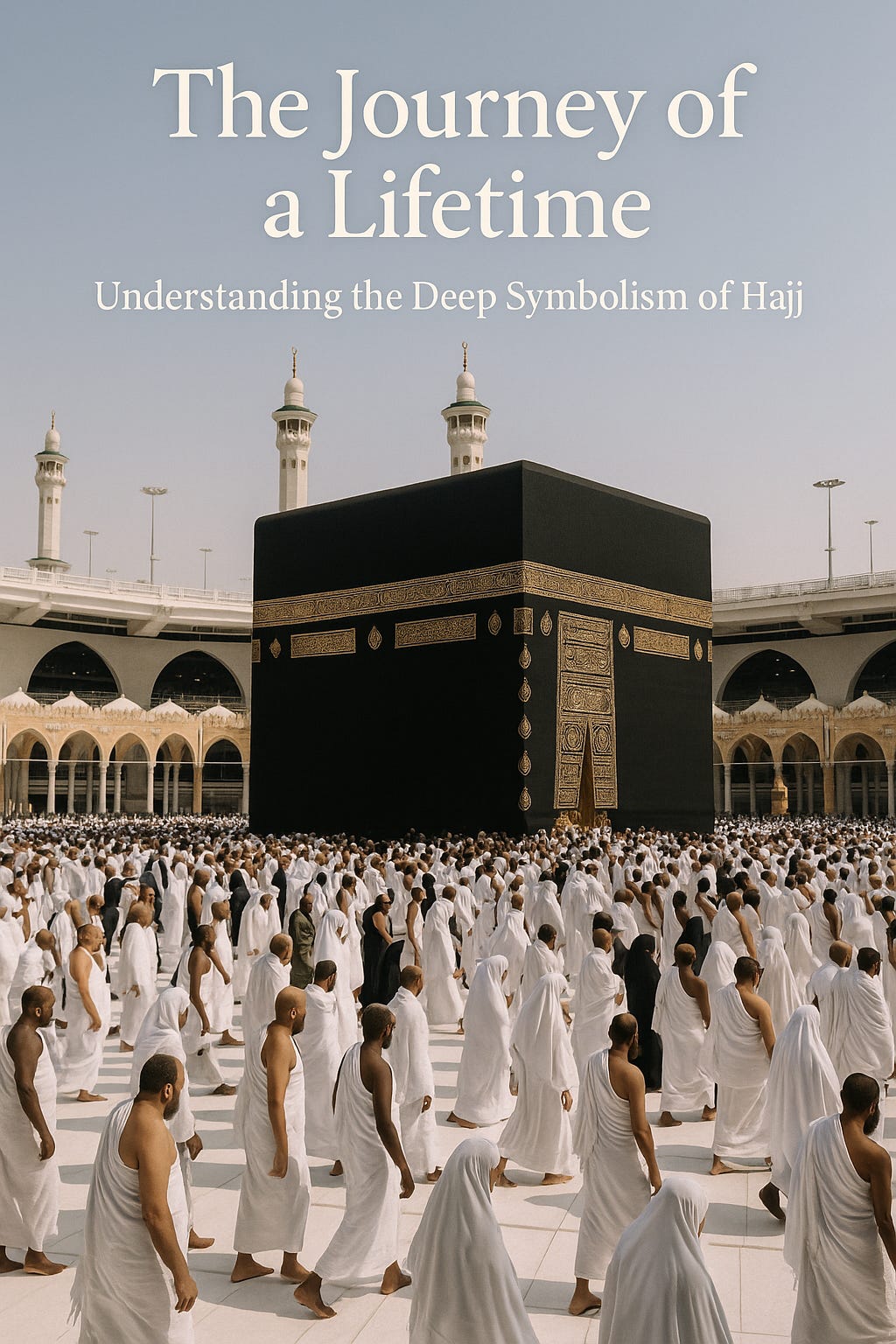The Journey of a Lifetime: Understanding the Deep Symbolism of Hajj
How the Sacred Pilgrimage Transforms the Soul and Reveals the True Essence of Faith
Each year, millions of Muslims around the world are drawn by a sacred longing—to stand before the Kaaba, the House of God, and experience the profound stillness that only Hajj can offer. It is not merely a journey of distance but a migration of the soul—a quest for transformation, nearness to Allah, and renewal of purpose.
Though obstacles may arise—financial, physical, or circumstantial—the door of divine mercy is always open. With sincere intention and preparation, the believer lives in hope that they too will be invited to that sacred gathering. But to truly benefit from Hajj, we must understand the deeper meanings behind each ritual. Every step, every action, holds within it a message for the soul.
1. Ihram: Clothing the Soul in Equality
The pilgrimage begins with donning the Ihram—two simple white garments for men, modest dress for women—stripping away markers of status, wealth, and identity. In this uniform, all stand equal before their Lord. Titles vanish, egos dissolve.
Hajj reminds us that we are not defined by our appearance, profession, or possessions—but by our sincerity, humility, and submission to God.
2. Tawaf: Revolving Around the Center of Truth
Circling the Kaaba during Tawaf is one of the most powerful symbols of the pilgrimage. It reflects the believer’s spiritual orbit—centering their life on tawheed, the Oneness of Allah.
Just as the Kaaba is the physical center of the Muslim world, God must be the central axis of our inner world—guiding our actions, relationships, and ambitions.
📖 “Indeed, the first House [of worship] established for mankind was that at Makkah—blessed and a guidance for the worlds.”
(Quran, Surah al-i-Imraan, Chapter 3, The Family of Imraan, Verse 96)
3. Sa’i: The Urgency to Strive
Running between the hills of Safa and Marwah, pilgrims reenact Lady Hajar’s desperate search for water for her infant son Ismail. This is not merely historical—it is a lesson in faith, struggle, and divine reward.
In every moment of despair, God sees us. In every effort, there is meaning. We are commanded to move forward, not to give up.
📖 “Indeed, as-Safa and al-Marwah are among the symbols of Allah.”
(Quran, Surah al-Baqarah, Chapter 2, The Cow, Verse 158)
4. Arafat, Muzdalifah & Mina: The Journey Within
The pilgrimage progresses through the sacred sites of Arafat, Muzdalifah, and Mina. These stages symbolise that spiritual growth is not a destination, but a path—marked by reflection, submission, and sacrifice.
Arafat, the heart of Hajj, is where pilgrims stand in prayer, stripped of all distractions. It is said that on this day, Allah comes closest to His servants, accepting their duas and forgiving sins.
We are created to walk, to strive, and to ascend—never to stagnate.
5. The Sacrifice: Giving Up What We Love
In Mina, the act of sacrificing an animal commemorates the story of Prophet Ibrahim (AS) and his son Ismail. It’s a moment that tests the very core of submission.
Sometimes, we are asked to surrender not animals—but our comfort, our attachments, our egos—for the sake of truth.
📖 “So when they had both submitted (to God’s command) and he had laid him down on his forehead...”
(Quran, Surah, as-Saffat, Chapter 37, The Rangers, Verse 103)
In Shia understanding, this sacrifice also echoes the sacrifices of Imam Husayn (AS) and his family—reminding us that true faith often demands courage, loss, and defiance in the face of injustice.
6. Rami al-Jamarat: Defying the Forces of Evil
The stoning of the three pillars—Rami al-Jamarat—represents our war against temptation and evil. The devils are not merely external. They take the form of pride, greed, apathy, injustice.
With each stone thrown, the believer proclaims: “I will not obey you. I choose truth over illusion.”
📖 “Thus We have made for every prophet enemies—devils from among human beings and jinn...”
(Quran, Surah al-An’am, Chapter 6, The Cattle, Verse 112)
Conclusion: A Lifelong Pilgrimage
Hajj is not the end of the journey—it is the beginning of a new life. Each ritual teaches a lesson: humility, unity, struggle, sacrifice, and resistance. The real Hajj continues long after we return—carried in our prayers, our ethics, our fight for justice.
As we long for the day we are called to His House, let us prepare not just with money or passports—but with purified hearts, open hands, and sincere devotion.
Until that blessed moment arrives, may our lives be a reflection of Hajj itself—a journey toward God, every single day.
Sources: Ali Reza Panahian and The Official Website of Ayatullah Khamenei


